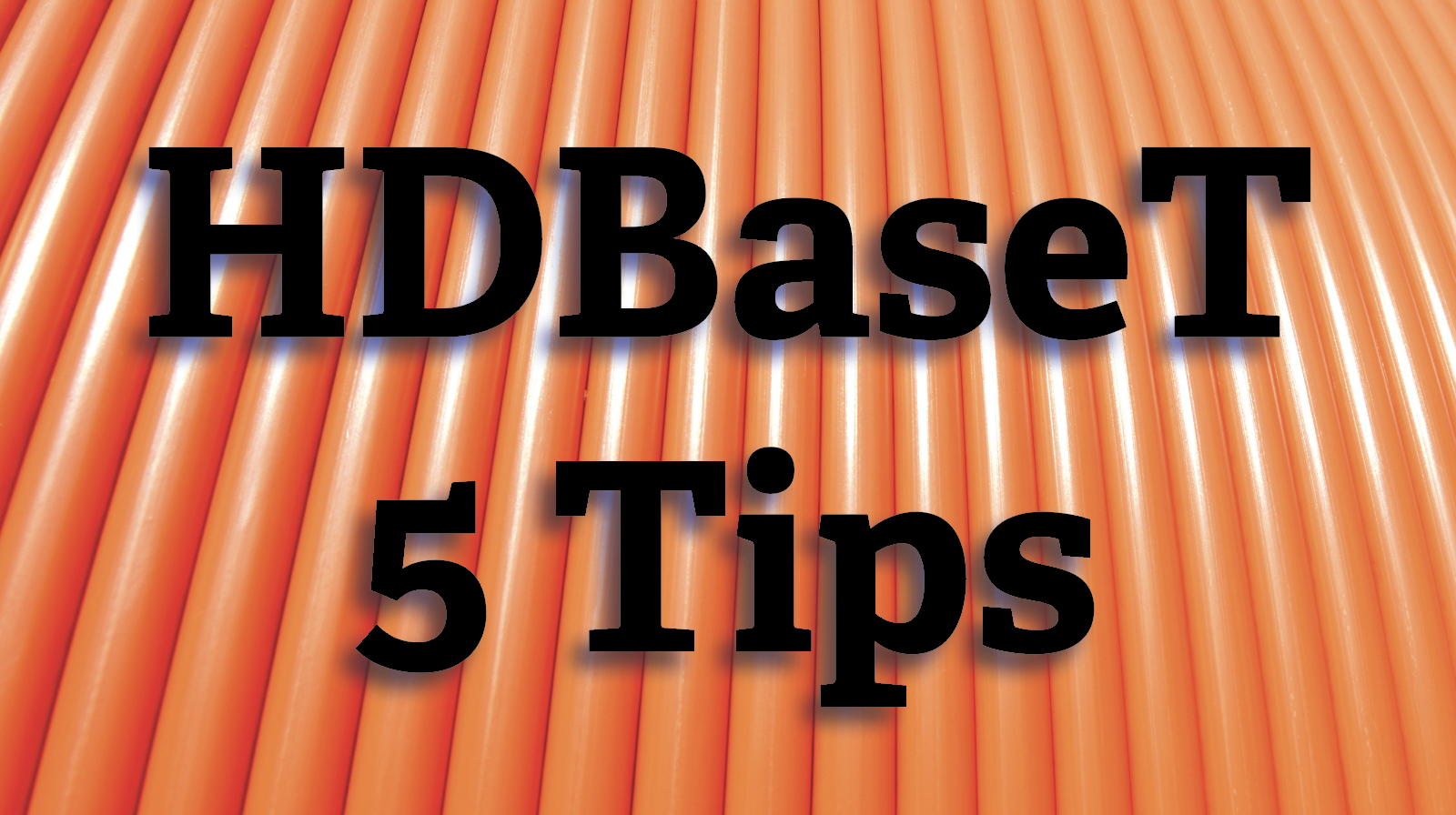Top 5 Best Practices for Pulling HDBaseT
Five tips for working with HDBaseT cables that will help avoid destroying AV equipment, avoid cable breakage, avoid interference, and why you should always go shielded.

Five tips for working with HDBaseT cables that will help avoid destroying AV your equipment, avoid cable breakage, avoid interference, and why you should always use shielded Cat6A cable.
Labeling HDBaseT Cables

If there are multiple HDBaseT transmission lines in a system, you’ll end up with two or more HDBaseT cables running to and from the wallplate. If the cables aren’t labeled correctly and connect two transmitters or two receivers, this can and will damage or outright destroy the equipment. Even plugging something in for 10 seconds or less can destroy the connected devices by overloading their internal chips.
This causes a headache for everyone involved because it requires equipment to be replaced, which can take valuable time away from other installations. Clearly and consistently labeling every cable can greatly reduce the chance of this happening.
Testing HDBaseT Cables

Make sure to test your HDBaseT cables and have spares available on site. Even if they’re pre-made or have been tested before, it’s still important to test all HDBaseT cables after the system has been fully installed.
The same cables that will pass tests with flying colors in-factory may break if they’re damaged during installation or installed with too many sharp bends.
Managing Cables within Cable Sleeves

While this makes the cable look shorter, it drastically increases the chance of the cables breaking if they’re stepped on. Unless absolutely necessary, coil the cables neatly before placing them in the run to mitigate the chances of cable damage and system failure.
Oftentimes, cables running from a podium, desk, or other piece of furniture to a wallplate will vary in length, requiring the excess to be bundled somewhere to keep it out of the way. Some installers take the approach of “out of sight, out of mind” by coiling the excess within the cable sleeve running to the wallplate.
A daily selection of features, industry news, and analysis for AV/IT professionals. Sign up below.
Eliminating Zip Ties

When managing or routing cables, avoid using zip ties, especially for HDMI and HDBaseT cables. Tying zip ties too tight can damage the wires inside the cables. If you have to move a cable for any reason, a zip tie would need to be cut and replaced—which runs the risk of damaging the bundled cables— whereas Velcro offers more flexibility while fulfilling the same purpose.
Furthermore, you don’t want to tie HDBaseT and power cables together, especially over long distances or in the ceiling. This can introduce interference into the HDBaseT signal, causing static to appear on the projected image.
Using Shielded Cat6A

If you’re running an HDBaseT connection through a wallplate, you always want to make sure that you’re using a shielded Cat6A cable. Unlike traditional cat6A cables, shielded cables are wrapped in a thin layer of aluminum which protects them from electrical interference. A quick way to tell the difference between standard and shielded cables is by looking at the connectors; standard Cat6A cables have plastic RJ45 connectors, while shielded ones have metal connectors.
You may be tempted to choose standard Cat6A cables since they’re less expensive and easier to work with, but the lack of added protection can negatively affect device performance (e.g. displays flashing on and off). Knowing the difference and choosing wisely can result in more reliable systems and fewer support calls down the road.
Sam Steup is a mechanical engineer at TEKVOX. He graduated from Trinity University with a Bachelor's in Engineering Science in 2018. He now works as a mechanical systems engineer for TEKVOX, designing Drop-In A/V systems and writing technical documentation.
DJ Virassamy is a system engineer at TEKVOX. Previously, he was a field engineer for CX2, which included commissioning projects upon completion. He’s been in the AV industry for 15 years.
Scott Wold is a content and marketing coordinator at TEKVOX. He previously worked in the healthcare field as a consultant for an electronic medical record company and volunteered with hospice.

Sam Steup is a mechanical engineer at TEKVOX. He graduated from Trinity University with a Bachelor's in Engineering Science in 2018. He now works as a mechanical systems engineer for TEKVOX, designing Drop-In A/V systems and writing technical documentation.
